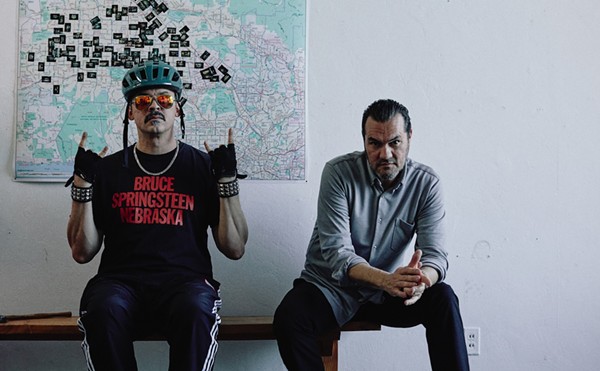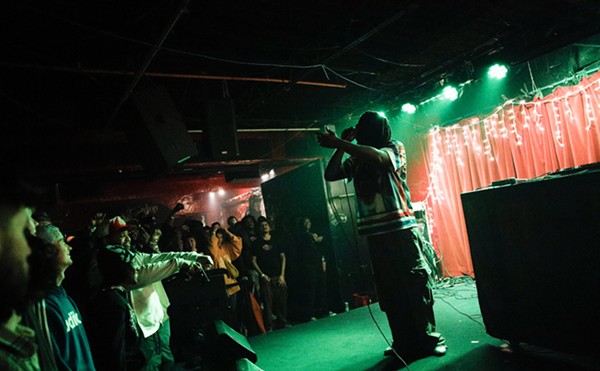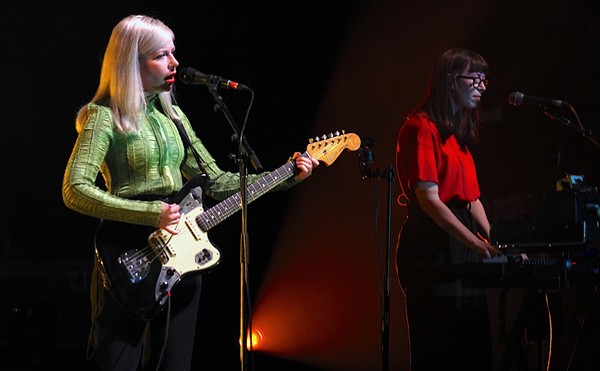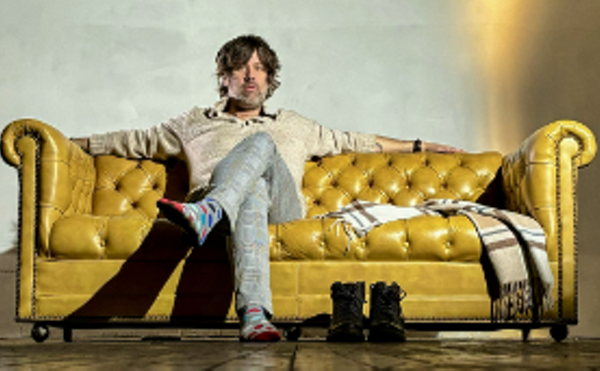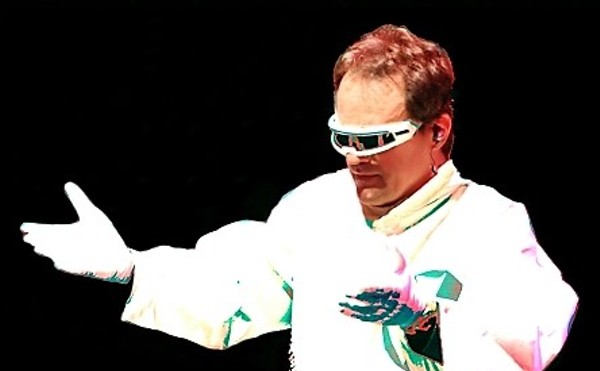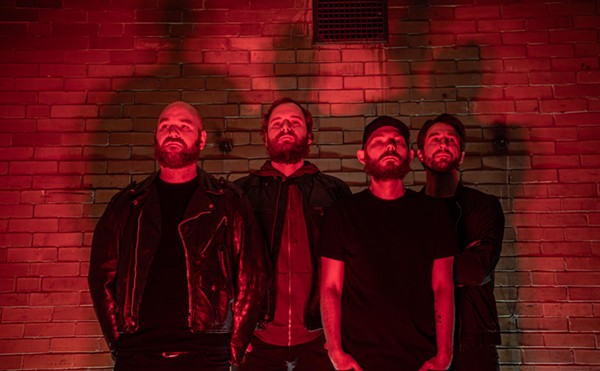Anyone who still thinks of Stewart Copeland as the drummer for the Police has a lot of catching up to do. The last time Copeland was in Cleveland, in October 1989, he was premiering his opera Holy Blood and Crescent Moon, commissioned by David Bamberger and performed by the Cleveland Opera.
Copeland is returning this week to continue his classical run with Gamelan D'Drum, a three-movement work for orchestra and world percussion ensemble. The Cleveland Orchestra will provide backing, so to speak, for the percussion group D'Drum, which gave the world premiere of the piece with the Dallas Symphony Orchestra in February 2011.
"I'm really excited to be coming back to Cleveland, which has been so good to me," Copeland says.
Gamelan D'Drum was a commission from D'Drum, a five-man group comprised of DSO percussion players who in their spare time explore world music, particularly the style of Javanese and Balinese percussion known as gamelan. For Westerners, the most striking feature of gamelan is the array of exotic instruments it employs — gongs, metallophones, two-headed drums, metal bars, and the amadinda, a wooden xylophone. Also prominent in D'Drum's equipment, and Copeland's piece, is a rice trough.
"By the way, that's a rice trough tuned in F," Copeland notes. "When the Royal College in London played the piece this past summer, they had to hire a carpenter to build them a rice trough in F. D'Drum will be bringing their own rice trough to Cleveland."
Composing the piece proved to be a challenge that took Copeland nearly two years.
"The mechanics of creating a template with which to compose were quite painstaking," he says. "I had to get audio samples of every instrument D'Drum uses — every bell, bar, and gong — take them home, carve them up, and map them to my keyboard. Then I had to create a synergistic relationship between the orchestra and this exotic thing they do. You know, women all over the world have been pounding rice, millet, you name it, in hollowed-out logs for thousands of years. I had to take what D'Drum does with that and figure out a way to make the orchestra work with it."
Though Copeland has long been intrigued by gamelan sounds and rhythms, this was the first time he ever tried to use them in his work.
"I've been a fan of Balinese music since I was in college," he says. "I went to Bali years ago, but only as a fan, not really studying it — because the music is so out there, I never saw a way to bring it into my musical vocabulary, except for the fundamental concept of interlocking rhythms."
In those rhythms, each musician plays different notes instead of the same ones together — so that in, say, a bar of 16 notes, a given musician will only play three or four of them, with his bandmates filling in the others. The structure differs as well. Instead of repeating bars of the same beat, Balinese music is performed in what Copeland calls "rhythmic sentences," multiple-bar sections of varying beats.
How do you write that kind of music for classical orchestra? The short answer is, you don't. You write it for a world percussion ensemble, with accompanying Western-style music for the orchestra.
"I would encourage your readers to seek out real Balinese music, which is beautiful," Copeland says. "But that's not what the audience is going to hear at Severance Hall. This is an American piece using Balinese instruments, which bring a huge texture to the piece and evoke the atmosphere of faraway places. But the composer is still an American."
How did all this go over in Dallas? Very well, with the premiere garnering an enthusiastic ovation — at least according to the critics. That was not Copeland's experience.
"The Dallas orchestra did a fantastic job with the piece, but all I heard was the four or five little places where I was thinking, that's not what I wrote," he says. "So I was wincing and cringing in a fetal position until the end, when I looked up and realized, hey, they're not throwing anything, they're cheering."
For that, Copeland gives big props to D'Drum. "Despite my picayune moments about slight misinterpreted bars, what really made it work in Dallas were those guys, who put on a show that is just undeniable," he says. "All those exotic instruments, all that cool banging and clattering, all the beauty that they can get out of those bells and everything— that's a guaranteed smash."
And he expects even better things from D'Drum here.
"They completely owned the piece in Dallas, but they've been honing and tightening it even more for the Cleveland performance," Copeland says. As for the orchestra, he adds, "I have no doubt the Cleveland Orchestra will do even better. They'll knock that sucker out in one rehearsal — that's what you've got in your town."
Asked what kind of response he hopes for in Cleveland, Copeland starts with a pro forma answer: "The audience should feel transported to somewhere new, a faraway, exotic place where they can feel the throb of that rhythm." Then he reconsiders and adds, "Actually, what I would like is for all of the audience to take their clothes off and start dancing and painting themselves in mud and running around."
Copeland will be at Severance for the performance, and shouldn't be hard to spot.
"I'll be in a fetal position in my balcony seat," he says. "And if it all goes well, I'll be down there onstage at the end, covered in mud."



